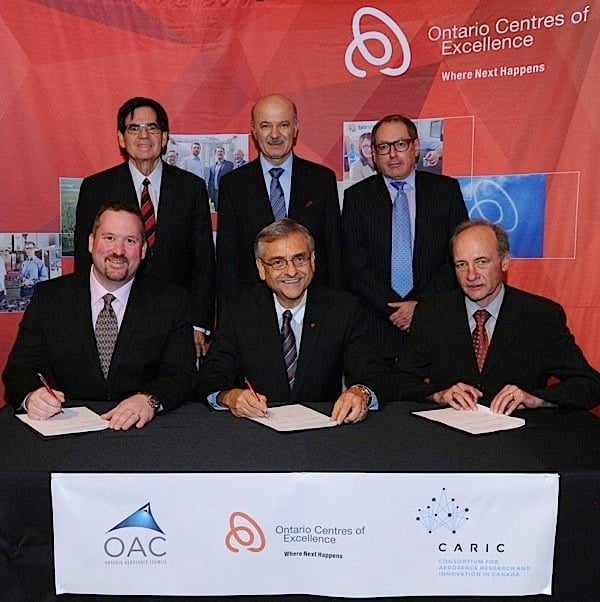A new tripartite agreement among research and industry groups will help Ontario’s aerospace industry become more innovative and more successful, says Ontario’s Minister of Research and Innovation. Reza Moridi announced the new collaboration, which includes the Ontario Centres of Excellence (OCE), the Ontario Aerospace Council (OAC) and the newly formed Consortium for Aerospace Research and Innovation in Canada (CARIC). The three groups will work together to identify and develop opportunities for collaborations between industry and academic R&D in aerospace.
The OCE and OAC have worked together previously. The new arrangement will see an OCE business development manager assigned full time to identify and facilitate industry-academic collaborations.
“This initiative builds on the well-established relationship we have with the OAC,” said Dr. Tom Corr, President and CEO of OCE. “I expect we will see a great many incredible new ideas and innovations taking flight as a result.”

CARIC, which was formed earlier this year as a federal initiative, is also intended to o bring together stakeholders from industry and academia. The partnership with OCE and OAC “will enable an inclusive, impactful aerospace research network,” said Denis Faubert, CEO of CARIC.
OCE’s purpose, or mission, is to “accelerate innovation through game-changing research,” that research leading to commercialization, thereby “launching the next generation of products and jobs.” Its various programs are intended to leverage Ontario’s research institutions to help companies and entrepreneurs “turn ideas into income.” OCE’s business development managers work directly with researchers and “literally explore the halls and labs of academe” to find out what breakthroughs researchers are making. It invests in a wide range of areas besides aerospace—health, information and communications technology; digital media; advanced materials and manufacturing; transportation; energy and the environment.
The Ontario Aerospace Council is a non-profit corporation that represents all segments of the industry. Its mandate is to help businesses find new opportunities through such activities as providing information, organizing trade missions, and participating in international trade shows. The chair of OAC, Todd Young, said that the new arrangement, which establishes a mechanism for aerospace companies in Ontario to access R&D opportunities, is “essential to competing on a global scale.”
CARIC was formed in response to a recommendation of the federal government’s Emerson Report on the aerospace industry in Canada (2012). That report identified the need for a “structured initiative” that would foster a collaborative approach to research in the aerospace industry across Canada. Collaboration, said the president of the Aerospace Industries Association of Canada, is crucial to the industry’s ability to compete globally.
Ontario’s aerospace industry is second in size only to Quebec’s in Canada.


































